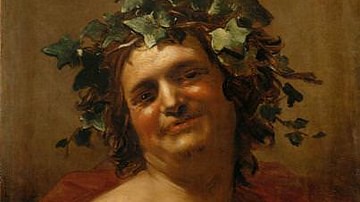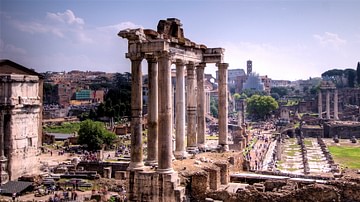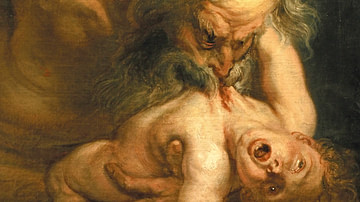The 4th century CE Temple of Saturn is situated in the north west corner of the Roman Forum of Rome and has eight majestic columns still standing. Built in honour of Saturn it was the focal point of this ancient cult and stood on the site of the original temple dedicated in c. 497 BCE, which itself had replaced the god's first shrine, the Ara Saturni. In addition, during the Republic the temple also housed the public treasury (aerarium), a function it kept, albeit in a more limited function, in the Imperial period.
Saturn is something of a mysterious figure in Roman religion. Depictions of the god in surviving art have him wearing a veil and brandishing either a sickle or a pruning knife. Perhaps a version of the Greek god Kronos, he was especially worshipped in the Saturnalia festival held every 17th of December (from at least the 5th century BCE) and which lasted several days. This was a festive occasion when people gave gifts to one another, slaves had the freedoms enjoyed by ordinary citizens, more informal clothes were worn instead of the usual toga, and there was a general round of partying and merrymaking which made it the jolliest Roman festival in the calendar; a fact which led Catullus to describe it as 'the best of times'. In later centuries the festival would metamorphose into the Brumalia festival and the similarity of its features and timing - pushed later into December in subsequent centuries - suggest an influence on the Christmas celebration.
The surviving ruins of the temple stand on a pediment of travertine blocks and are themselves composed of pieces recycled from earlier temples. The columns are of the Ionic order and eight still remain on the northern facade. The shafts of the columns are made from Egyptian granite, the two on the side from pink Aswan and the six facade ones from grey Mons Claudianus. Indicative of their differing history, three are monoliths and the others are composed of two pieces fitted together. The Ionic capitals are, in fact, the only parts made specifically for the temple and are from Thasian marble and carved in typical Late Antique style. The architrave carries an Ionic frieze of acanthus leaves and palmettes and came from the previous temple on the site, commissioned by one of Julius Caesar's generals, Lucius Munatius Plancus, in 43 BCE using spoils from the campaigns in Syria.
Within the temple once stood a cult statue of Saturn which became the centre of attention during the Saturnalia when his feet were symbolically freed from the woollen bonds that tied him up for the rest of the year. This act has led to Saturn being associated with liberation, certainly a feature of the Saturnalia festival. The inscription on the exterior of the architrave relates to the reconstruction carried out in the 360s and 370s CE and reads as follows:
SENATVS POPVLVSQVE ROMANVS
INCENDIO CONSVMPTVM RESTITVIT
(The Senate and People of Rome, restored following destruction by fire).






